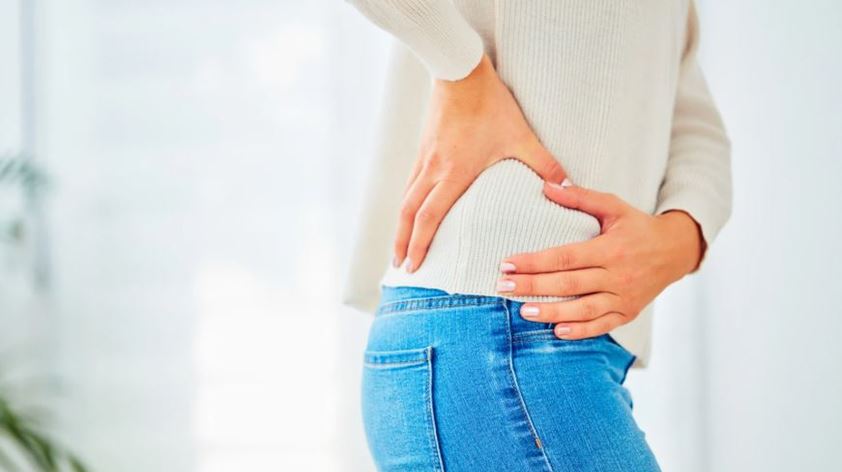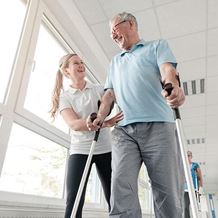Hip Bursitis: Expert Insight on Prevention, Symptoms & Treatment
A Specialist's Insight
- Home
- Services
- Orthopaedics
- Knowledge Hub
- A Specialist's Insight - Hip Bursitis
What is hip bursitis – and why does it happen?
Hip bursitis is a painful condition caused by an inflammation of the hip bursa. Although it can affect anyone, it is known to be more common in woman and elderly patients, and is thought to be caused by weak supporting muscles or an injury. As Dr Kalanie explains, “The main problem comes from the inflammation, thinning and possible tearing of tendons surrounding the hip joint.” Patients often experience severe pain on the outside of the hip, which is further aggravated by daily activities such as walking, climbing stairs or even prolonged sitting.
How is it treated?
Initial treatment involves a holistic combination of rest, lifestyle adjustments and targeted treatments such as over-the-counter pain medication, and in some cases physiotherapy. This simple approach is generally enough to treat over 50% of hip bursitis cases. Physical therapy can support recovery by strengthening the surrounding muscles to relieve the pain in the affected hip. Surgery is rarely needed unless the pain has been a significant problem for over three months. In such cases, your doctor may recommend an ultrasound, MRI or hip arthroscopy to determine the extent of the problem. Where the tendons are inflamed but intact, a platelet-rich plasma injection can be a helpful solution. If the tendons are torn and all other treatments have failed, surgery may be considered necessary to remove the inflamed bursa.

Expert-approved prevention strategies and treatment tips
When it comes to managing symptoms and flare-ups, it’s all about finding strategies that work best for your body, ones that allow you to move in a way that supports rather than strains your joints. Here are some expert tips to get you started.
1. Keep moving – but know your limits
Staying active is one of the best ways to protect your hips as you age, with regular exercise an essential ingredient for maintaining mobility and building strength. But it’s equally as important not to overdo it. Dr Kalanie advises all patients to start out gently, and to stop immediately and seek advice if experiencing any new or worsening hip pain.
Low-impact exercises such as walking, swimming and cycling help keep your joints moving without adding additional pressure
Avoid repetitive action that can irritate the hip bursa such as long uphill climbs or deep lunges
Vary your activity to avoid overuse – this also gives your muscles and joints time to recover and repair
2. Balance your body and mind
How you move, and how you feel are inextricably linked. “People often overlook how much your mental stress can show up in your physical symptoms,” explains Dr Kalani. Practising mindful movement such as Yoga, Tai Chi or Pilates can help support your overall wellbeing as well as maintain strength and improve flexibility. The extended benefits can be far-reaching.
Ease stiffness around the hip joint
Strengthen supporting glute muscles (medius and minimus)
Improve core strength and balance
Enhance awareness and stay in tune with your body
Reduce stress and tension
3. Target the right muscles
It takes a team to create strong stable hips. Without the right tendon support, your hip joint takes on extra strain which can increase friction and irritation. Dr Kalani advises that patients target the gluteus medius and minimus, muscles which play a major role in keeping us upright, balanced and pain-free. Exercises such as clam-shells, glute bridges, hip abductions and leg raises all target this key area. “Building everyday strength is one of the most effective ways to prevent bursitis occurring – or coming back.”
4. Improve your body posture
How you move throughout the day can have a huge impact on your overall hip health. Poor posture increases pressure on your tendons which leads to uneven weight distribution – which then leads to pressure on your joints and bursa. Dr Kalani reminds us to think of our hips as part of a larger system. If one part is out of kilter, the whole system works less efficiently. Small posture changes in our everyday life and at work can make a big difference to your overall wellbeing.
Always stand tall with even balance
Use a chair with good lumbar support, keeping your knees at hip level
Avoid sitting for long periods
Take even strides while walking
Wear supportive footwear
5. Hip-friendly sleep
Night pain can be one of the most difficult symptoms for patients trying to sleep with hip bursitis. Taking steps to change your set-up can relieve symptoms and give your hip a chance to settle.
Sleep on the opposite side to alleviate pressure
Try using a soft pillow between your knees for support
Check your mattress is not too firm or soft
6. Incorporate anti-inflammatory foods
We are what we eat, and even small dietary changes can have a big impact on our joint health. Eating a nourishing diet that incorporates anti-inflammatory foods can help support your body’s natural healing process and reduce the risk of painful flare-ups. Think fatty fish like salmon and mackerel, leafy greens, berries and nuts – and avoid processed foods that have the opposite effect.
7. Maintain a stable weight
Carrying excess weight adds pressure to your hips, which can exacerbate painful symptoms and aggravate your risk of hip bursitis. Maintaining a healthy weight avoids this problem, and also makes it easier to stay active – something which is key to long-term health. The goal is to create the best foundation for pain-free movement, and the ability to live the active life we choose. As Dr Kalani reminds us, “This is about giving your joints the best chance to stay strong and pain-free.”
Limit snacks and sugary drinks
Reduce portion sizes
Increase daily movement

Always listen to your body
You know your body best. If you are experiencing continued, worsening or new hip pain, talk to our specialist orthopaedics team today.



